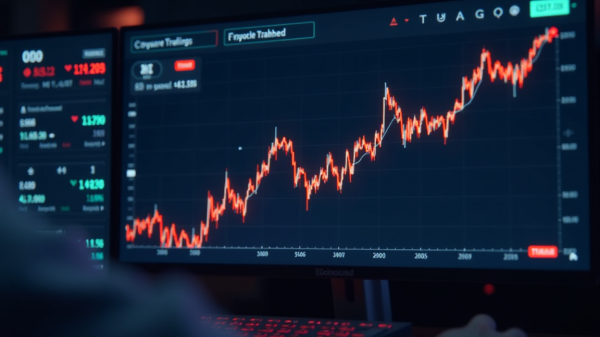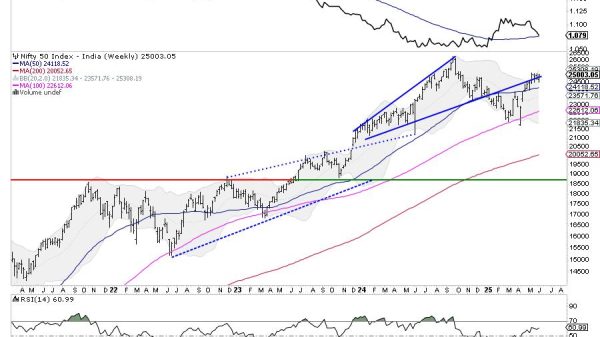Optimizing Profitability: Risk-Reward Ratio in Forex Trading
The world of Forex (foreign exchange) trading is both exciting and complex, involving the simultaneous buying and selling of currencies. There are numerous inquiries about “risk reward ratio Forex,” “Forex money management,” and “Risk management techniques.”
To navigate this dynamic market successfully, traders need to understand and effectively manage various aspects, including the risk-reward ratio, risk management techniques, and the psychological aspects of trading. Traders shouldn’t think only about potential profits. They should also understand potential risks.
Financial markets are platforms where participants buy, sell, and trade financial assets such as stocks, bonds, currencies, and derivatives. They play a critical role in the global economy by facilitating the flow of capital and liquidity, enabling risk management, and providing a mechanism for price discovery.
The risk-reward ratio in Forex trading
The risk-reward ratio is a fundamental concept in Forex trading, representing the potential reward a trader can earn for every dollar they risk. Let’s take a closer look at the “risk reward ratio Forex.”
It’s usually expressed in ratios such as 1:2, 1:3, etc., where the first number represents the potential loss (risk) and the second number, the potential gain (reward).
Importance of risk-reward ratio: This ratio helps traders manage their capital efficiently and maintain a balanced approach to trading. A favorable risk-reward ratio, such as 1:3, means a trader is risking one unit of currency to gain three, helping to ensure that over time, potential gains can outweigh losses. This ratio becomes a crucial element in creating a sustainable trading strategy.
Setting up risk-reward ratios: Determining the appropriate risk-reward ratio depends on individual trading style, risk tolerance, and market conditions. Conservative traders might prefer a lower risk with a higher potential reward (e.g., 1:3 or 1:4), while more aggressive traders might accept higher risks for potentially higher rewards.
Balancing risk and reward: A key to successful Forex trading is not just setting an ideal risk-reward ratio, but also understanding that not all trades will be winners. The goal is to ensure that the winning trades provide enough profit to cover the losses and provide additional profit.
Profit orders
In Forex trading, profit orders, commonly known as “take profit” orders, are instructions to close a trade automatically when it reaches a predetermined profit level.
This tool enables traders to lock in profits and manage their trades without needing to monitor the market constantly. Setting these orders requires strategic planning based on market analysis and individual trading goals.
Risk management techniques in forex trading
Effective risk management is critical in Forex trading to ensure long-term success and capital preservation.
Position sizing in Forex: This involves determining how much of your capital to risk on any single trade. A common rule of thumb is not to risk more than 1-2% of your trading capital on a single trade. This helps to avoid significant losses from any single trade.
Stop-loss placement: A stop-loss order automatically closes a trade at a predetermined price level, limiting potential losses. It’s an essential tool in a trader’s risk management arsenal.
Leverage management: Forex trading often involves leverage, which can amplify both gains and losses. Managing leverage and understanding its impact is crucial for risk management.
Diversification: Although not as straightforward in currency trading as in stock trading, diversification can still be achieved by not overexposing oneself to a single currency pair or correlated pairs.
Understanding market conditions: Different market conditions (volatile, stable, trending, range-bound) require different trading strategies and risk management approaches.
Trade risk analysis in Forex trading is vital for sustaining long-term profitability and capital preservation. It involves evaluating the potential losses in a trade and ensuring they align with the trader’s risk tolerance and overall trading strategy.
By analyzing trade risk, traders can set appropriate stop-loss orders, determine optimal position sizes, and avoid overexposure to market volatility. This practice not only guards against significant losses but also fosters disciplined trading, crucial for navigating the inherently unpredictable Forex market.
High-probability Forex setups
Let’s not forget about the importance of high-probability Forex setups.
High-probability Forex setups refer to trading scenarios where the likelihood of a profitable outcome is significantly higher. These setups typically emerge from a combination of technical indicators, price patterns, and market conditions.
Examples include:
Trading on the breakout of well-established support and resistance levels. Utilizing moving averages for trend identification. Employing candlestick patterns like engulfing bars or pin bars at key levels.Traders also often look for convergence of signals from multiple indicators (like MACD, RSI, and Bollinger Bands) to increase confidence in a setup. Successful high-probability trading hinges on disciplined risk management and consistent application of a well-tested trading strategy.
Trading psychology and its impact on Forex
Trading psychology and discipline are often the most challenging aspects for Forex traders to master but are crucial for success.
Emotional control: Trading can be emotional, especially in a volatile market like Forex. Fear, greed, and hope can lead to impulsive decisions and deviation from the trading plan. Successful traders learn to control their emotions and stick to their strategies.
Importance of discipline: Discipline involves following your trading plan, adhering to your strategies, and not deviating due to market noise or emotions. It also means knowing when not to trade.
Dealing with losses: Losses are part of trading. The key is to learn from them and not let them impact future trading decisions. A disciplined trader will analyze losses to improve their strategy.
Developing a trading plan: A comprehensive trading plan includes entry and exit criteria, risk-reward ratios, money management rules, and what to trade and when. This plan must be tested and adapted as necessary.
Optimal trade entry and exit in Forex trading are crucial for maximizing profits and minimizing losses. For entry, traders often look for confirmation of trends through technical indicators (like moving averages or MACD) and price patterns (like breakouts or retracements).
Mental resilience: The ability to bounce back from losing streaks or drawdowns is essential. It is important not to be afraid of potential risks. Mental resilience also involves the capacity to stay level-headed during winning streaks, avoiding overconfidence.
Setting realistic expectations: Unrealistic expectations can lead to excessive risk-taking and disappointment.Setting achievable goals and understanding that Forex trading is not a quick-rich scheme is important.
The importance of diversification
Diversification in Forex trading is a strategic approach that involves spreading investment risk across different currency pairs, market conditions, and trading strategies. Unlike diversification in stock trading, which typically involves investing across different sectors or asset classes,
Importantly, diversification requires a nuanced understanding of currency relationships and global economic factors. This concept is essential in managing risk and achieving more stable returns in the often volatile and unpredictable Forex market.
Diversification strategies
We also need to discuss diversification strategies.
Across different currency pairs: Traders should consider investing in a mix of major, minor, and foreign pairs. This can help balance the risk as these pairs react differently to market events. For example, majors are often more stable, while foreigns can offer higher profitability but with increased risk.
Geographical diversification: Investing in currencies from different geographical regions can also be a diversification strategy. Different economies react differently to global economic events, and thus their currencies will also respond differently.
Time frame diversification: Engaging in trades over different time frames can also be a form of diversification. For example, combining long-term trades based on fundamental analysis with short-term trades based on technical analysis can spread risk.
Diversification across trading styles: Employing various trading styles (like scalping, day trading, swing trading, and position trading) can also be a diversification strategy. Each style has different risk profiles and reacts differently to market changes.
Diversification in Forex trading is a nuanced and dynamic strategy that can help traders manage risk and seek more stable returns. It requires a deep understanding of currency correlations, global economic fundamentals, and disciplined risk management.
Bottom line
The best time to enter a Forex trade largely depends on a trader’s strategy, the currency pair being traded, and market conditions. Generally, optimal entry points are identified through a combination of technical analysis, such as trend lines, support and resistance levels, and indicators like moving averages or RSI.
Many traders prefer entering trades during periods of high liquidity and volatility, often seen during the overlap of major market sessions like London and New York. Fundamental factors like economic news releases also play a critical role, as they can trigger significant market movements, providing potential entry opportunities for informed traders.
In conclusion, it is hard to overestimate the importance of the “risk reward ratio Forex.” Besides, traders should be prepared for potential losses. It is desirable to learn more about reward-to-risk- optimization.
The combination of a well-calculated risk-reward ratio, robust risk management techniques, and a strong handle on trading psychology and discipline forms the cornerstone of successful Forex trading.
While each aspect plays a vital role, their interplay is what ultimately dictates the success of a Forex trader. It’s a continuous learning process, requiring patience, perseverance, and a willingness to adapt to changing market conditions and personal growth.
The post Optimizing Profitability: Risk-Reward Ratio in Forex Trading appeared first on FinanceBrokerage.

























